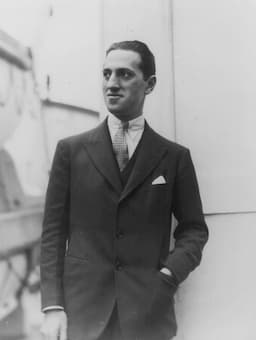
George Gershwin
The son of poor Jewish immigrants, George Gershwin (1898-1937), could hardly have dreamt that his Rhapsody in Blue would single-handedly propel him to world fame. The work was originally titled “American Rhapsody,” but when his brother Ira saw a painting by James McNeil Whistler entitled “Nocturne in Black and Gold,” he urged George to change the title to Rhapsody in Blue.
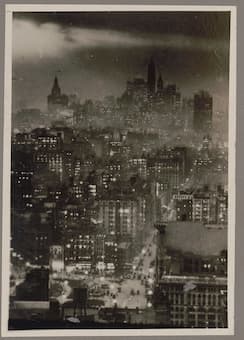
Night view of lower New York City from the Metropolitan Tower, 1920s
The surprising origin of the work however, dates back to 3 January 1924. On that day, George and Ira found an article in the New York Tribune announcing that bandleader Paul Whiteman was presenting a concert in New York. To their great surprise, they found that “George Gershwin was working on a jazz concerto, Irving Berlin was writing a syncopated tone poem, and Victor Herbert was working on an American suite.” Whiteman and Gershwin had indeed discussed a possible concerto drawing on classical and jazz styles a year and a half earlier, but the sudden announcement of a rival conductor now forced Whiteman and Gershwin’s hand.
Kirill Gerstein’s “Rhapsody in Blue” (Original 1924 Jazz band version)
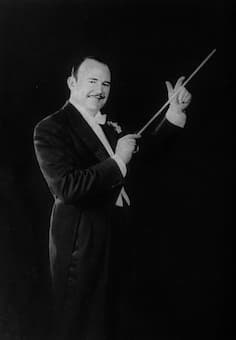
Paul Whiteman
Given the short lead-time, Gershwin discarded the idea of writing a concerto and settled instead on a free-flowing rhapsody of sorts. Since George did not want to deal with orchestration, Whiteman informed his own staff arranger Ferde Grofé to take on this particular task. Gershwin started work on 7 January, essentially notating the piece in a score for two pianos. Grofé later recalled, “I practically lived too in their uptown Amsterdam and 100th Street apartment, for I called there daily for more pages… He and his brother Ira had a back room where there was an upright piano, and that is where Rhapsody in Blue grew into being.” Gershwin was simultaneously working on another project that necessitated a trip to Boston. Gershwin remembers, “It was on the train, with its steely rhythms, its rattlety-bang that is often so stimulating to a composer… And there I suddenly heard—and even saw on paper—the complete construction of the rhapsody, from beginning to end… I heard it as a sort of musical kaleidoscope of America—of our vast melting pot, of our unduplicated national pep, of our metropolitan madness. By the time I reached Boston I had a definite plot of the piece, as distinguished from its actual substance.”
Bernstein/NY Philharmonic, “Rhapsody in Blue”
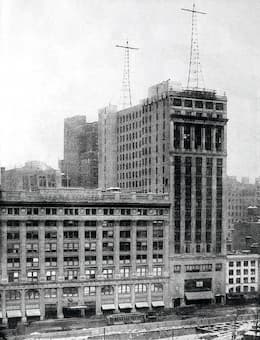
Aeolian Hall (1923)
On 12 February 1924, “the audience packed a house—Aeolian Hall in New York City—that could have sold out at twice the size,” according to the New York Times critic Olin Downes. Advertised as an educational event, the “Experiment in Modern Music” looked to demonstrate that the relatively new form of music called jazz deserved to be regarded as a serious and sophisticated art form. The young George Gershwin, primarily known as a composer of Broadway songs finally seated himself at the piano to accompany the orchestra in the performance of a brand new piece.
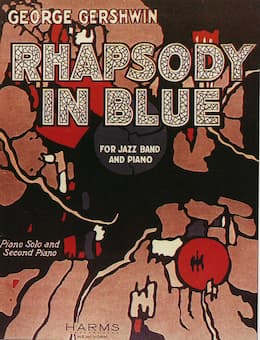 Downes wrote, “It starts with an outrageous cadenza of the clarinet, and has subsidiary phrases, logically growing out of it… often metamorphosed by devices of rhythm and instrumentation.” As the critic observed, “this is no mere dance-tune set for piano and other instruments. This composition shows extraordinary talent, just as it also shows a young composer with aims that go far beyond those of his ilk.”
Downes wrote, “It starts with an outrageous cadenza of the clarinet, and has subsidiary phrases, logically growing out of it… often metamorphosed by devices of rhythm and instrumentation.” As the critic observed, “this is no mere dance-tune set for piano and other instruments. This composition shows extraordinary talent, just as it also shows a young composer with aims that go far beyond those of his ilk.”
George Gershwin: “Rhapsody in Blue” (arr. clarinet, violin, cello and piano) (George Pieterson, clarinet; Vesko Eschkenazy, violin; Gregor Horsch, cello; Ludmil Angelov, piano)
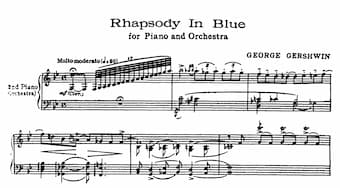
Opening of Gershwin’s Rhapsody in Blue
The critic for the New York Tribune was decidedly less charitable. He wrote, “How trite, feeble and conventional the tunes are, how sentimental and vapid the harmonic treatment, under its disguise of fussy and futile counterpoint. Weep over the lifelessness of the melody and harmony, so derivative, so stale, so inexpressive… it suffered from melodic and harmonic anemia of the most pernicious kind.” The critic clearly did not foresee that within a couple years of the premiere performance, several million copies of the recording had been sold. And when Gershwin traveled to Vienna in 1928, the house orchestra at the famous Café Sacher spontaneously played the opening of the Rhapsody in Blue as he entered. To be sure, Gershwin’s musical smorgasbord of combining elements from classical music with jazz influences fuelled a deep infatuation with American popular musical styles on the European musical landscape and far beyond.
For more of the best in classical music, sign up to our E-Newsletter
Liquid Tension Experiment, “Rhapsody in Blue” (Prog Metal Version)

I have listened to Rhapsody in Blue since a music teacher introduced it at assembly one morning when I was about 13/14 I am now 69 and I have listened and watched it being played many times, in me, there is the perfect dance/ballet for this music I just feel it and can see it in my mind’s eye but unfortunately not had a chance to put my thoughts out there, we had the river dances with all that energy I believe the same if not more energy exists in this piece of music especially having listened to the rock version on here !!
A Broadway style ballet!
What in the world was wrong with that music critic from the Times? Talk about pretentious and out of step!